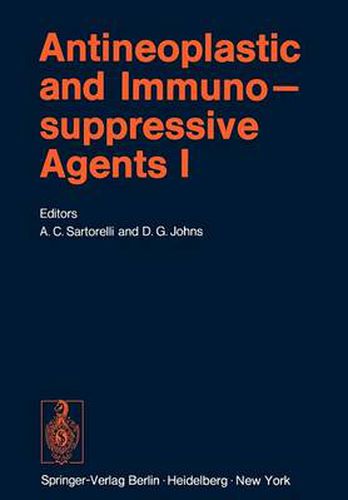Readings Newsletter
Become a Readings Member to make your shopping experience even easier.
Sign in or sign up for free!
You’re not far away from qualifying for FREE standard shipping within Australia
You’ve qualified for FREE standard shipping within Australia
The cart is loading…






This title is printed to order. This book may have been self-published. If so, we cannot guarantee the quality of the content. In the main most books will have gone through the editing process however some may not. We therefore suggest that you be aware of this before ordering this book. If in doubt check either the author or publisher’s details as we are unable to accept any returns unless they are faulty. Please contact us if you have any questions.
Over the past two decades a number of attempts have been made, with varying degrees of success, to collect in a single treatise available information on the basic and applied pharmacology and biochemical mechanism of action of antineoplastic and immunosuppressive agents. The logarithmic growth of knowledge in this field has made it progressively more difficult to do justice to all aspects of this topic, and it is possible that the present handbook, more than four years in preparation, may be the last attempt to survey in a. single volume the entire field of drugs em ployed in cancer chemotherapy and immunosuppression. Even in the present instance, it has proved necessary for practical reasons to publish the material in two parts, although the plan of the work constitutes, at least in the editors’ view, a single integrated treatment of this research area. A number of factors have contributed to the continuous expansion of research in the areas of cancer chemotherapy and immunosuppression. Active compounds have been emerging at ever-increasing rates from experimental tumor screening systems maintained by a variety of private and governmental laboratories through out the world. At the molecular level, knowledge of the modes of action of estab lished agents has continued to expand, and has permitted rational drug design to playa significantly greater role in a process which, in its early years, depended almost completely upon empirical and fortuitous observations.
$9.00 standard shipping within Australia
FREE standard shipping within Australia for orders over $100.00
Express & International shipping calculated at checkout
This title is printed to order. This book may have been self-published. If so, we cannot guarantee the quality of the content. In the main most books will have gone through the editing process however some may not. We therefore suggest that you be aware of this before ordering this book. If in doubt check either the author or publisher’s details as we are unable to accept any returns unless they are faulty. Please contact us if you have any questions.
Over the past two decades a number of attempts have been made, with varying degrees of success, to collect in a single treatise available information on the basic and applied pharmacology and biochemical mechanism of action of antineoplastic and immunosuppressive agents. The logarithmic growth of knowledge in this field has made it progressively more difficult to do justice to all aspects of this topic, and it is possible that the present handbook, more than four years in preparation, may be the last attempt to survey in a. single volume the entire field of drugs em ployed in cancer chemotherapy and immunosuppression. Even in the present instance, it has proved necessary for practical reasons to publish the material in two parts, although the plan of the work constitutes, at least in the editors’ view, a single integrated treatment of this research area. A number of factors have contributed to the continuous expansion of research in the areas of cancer chemotherapy and immunosuppression. Active compounds have been emerging at ever-increasing rates from experimental tumor screening systems maintained by a variety of private and governmental laboratories through out the world. At the molecular level, knowledge of the modes of action of estab lished agents has continued to expand, and has permitted rational drug design to playa significantly greater role in a process which, in its early years, depended almost completely upon empirical and fortuitous observations.